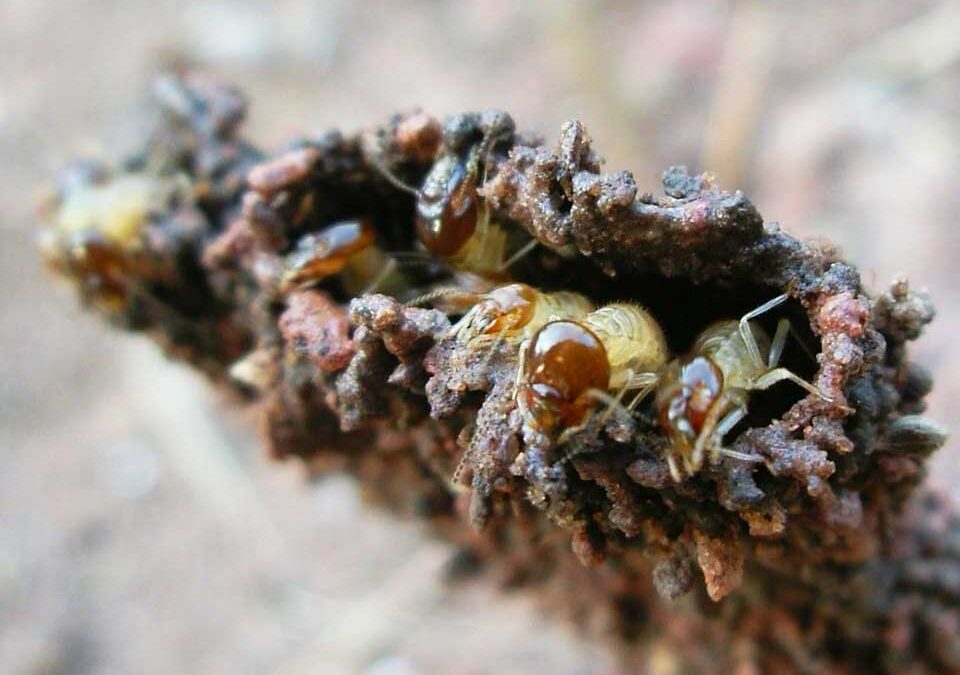
Termites are often seen as pests due to their ability to damage wooden structures. However, their dietary habits are more specialized than many people realize. While they can cause significant damage to homes and furniture, the question of whether termites eat human food is a common one. This article will delve into the termite’s diet, exploring what they primarily consume and whether they have any interest in our culinary offerings.
This article will examine the termite’s preferred food sources, focusing on their unique ability to digest cellulose. We’ll also discuss whether termites have any interest in human food and if they might occasionally nibble on sugary substances. By understanding their dietary needs, we can better appreciate these fascinating insects and learn how to protect our homes from their destructive tendencies.
Termite Diet
Termites are fascinating creatures with a complex social structure and a specialized diet. Unlike many insects that feed on a variety of materials, termites have evolved to primarily consume cellulose, a complex carbohydrate found in plant cell walls. This dietary specialization has led to the development of a unique digestive system that allows them to break down cellulose into usable nutrients.
Termites live in colonies with a strict division of labor. While the queen focuses on reproduction, the workers are responsible for foraging for food and caring for the young. These workers possess a symbiotic relationship with microorganisms in their gut that help them digest cellulose. These microorganisms produce enzymes that break down the complex carbohydrate into simpler sugars that the termites can absorb.
Cellulose Consumption

Cellulose is a tough and indigestible material for most animals, including humans. However, termites have evolved a remarkable ability to break it down. Their digestive system houses a diverse community of microorganisms, including bacteria, protozoa, and fungi. These microorganisms produce enzymes that can break down the complex bonds in cellulose, releasing the sugars that the termites need for energy.
The termite’s gut environment is carefully controlled to optimize the activity of these microorganisms. The termites regulate the temperature and pH of their gut, providing the ideal conditions for the microorganisms to thrive. This symbiotic relationship allows termites to access a vast and abundant food source that is unavailable to most other animals.
Types of Cellulose Sources
Termites are known to consume a wide variety of cellulose-rich materials, including:
- Wood: This is the primary food source for most termite species. They can feed on both dead and living wood, causing significant damage to structures and trees.
- Paper: Termites can also digest paper, which is made from cellulose fibers. This is why termites can be a problem in homes and offices.
- Plant matter: Termites will also consume other plant materials, such as leaves, grass, and roots. This helps them to recycle organic matter and contribute to the ecosystem.
Human Food and Termites
While termites are known for their cellulose-based diet, the question of whether they eat human food is a common one. The answer is generally no. Termites do not have a natural inclination to consume human food. Their digestive systems are specifically adapted to break down cellulose, and they lack the enzymes necessary to digest other complex carbohydrates found in many human foods.
However, there are some exceptions. Termites may occasionally be attracted to sugary substances, such as spilled syrup or crumbs. This is because sugar is a readily available source of energy. However, these instances are rare, and termites will not actively seek out human food as a primary source of nutrition.
Occasional Sugar Consumption

Although termites primarily feed on cellulose, they may occasionally consume sugary substances. This is because sugar is a quick and easy source of energy. However, termites do not have the same taste preferences as humans, and they are not attracted to the same types of sweet foods.
Termites may be attracted to spilled syrup, honey, or other sugary liquids. They may also be drawn to crumbs or other small pieces of food that contain sugar. However, these instances are usually opportunistic, and termites will not actively seek out human food as a primary source of nutrition.
Conclusion
Termites are fascinating creatures with a specialized diet that revolves around cellulose. While they can cause significant damage to wooden structures, they do not typically eat human food. Their digestive systems are specifically adapted to break down cellulose, and they lack the enzymes necessary to digest other complex carbohydrates found in many human foods. Although they may occasionally be attracted to sugary substances, human food is not a preferred source of nutrition for these insects. Understanding their dietary habits can help us better appreciate these creatures and learn how to protect our homes from their destructive tendencies.
